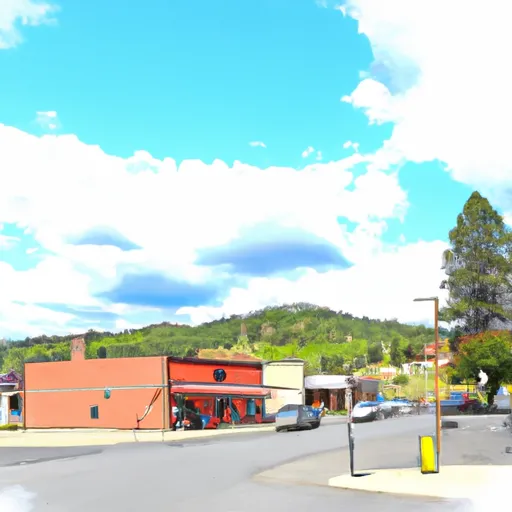-
 Snoflo Premium
Snoflo Premium
Get unlimited access to all our content
With no Ad interruptions! - Start Your Free Trial Login with existing account
Mattawa
Eden Index
Climate
8.7
•
Recreation
7.5
•
Community
2.2
•
Safeguard
6.6/10

Mattawa is a small town located in Grant County, Washington. The climate in Mattawa is characterized by hot, arid summers and cold winters. Summers are typically dry with temperatures ranging from the 80s to the 100s Fahrenheit, while winters are cold with temperatures dropping below freezing. The area receives minimal rainfall, making it a desert-like environment.
Mattawa is situated along the Columbia River, which not only provides a scenic backdrop to the town but also contributes to its hydrology constituents. The river offers opportunities for water-based activities such as boating, fishing, and swimming. The nearby Priest Rapids Lake also provides additional recreational opportunities.
In terms of outdoor recreation, Mattawa is surrounded by vast expanses of desert and rugged landscapes, making it a popular destination for hiking, off-roading, and camping. With its proximity to the Ginkgo Petrified Forest State Park, visitors can explore unique geological formations and discover prehistoric fossils. Additionally, the area is known for its excellent bird-watching, particularly during migratory seasons.
Overall, Mattawa's climate, hydrology constituents, and outdoor recreation opportunities make it an attractive destination for those seeking a desert experience with a variety of outdoor activities.
What is the Eden Index?
The Snoflo Eden Index serves as a comprehensive rating system for regions, evaluating their desirability through a holistic assessment of climate health, outdoor recreation opportunities, and natural disaster risk, acknowledging the profound impact of these factors on livability and well-being.
Climate Health Indicator (CHI): 8.7
Mattawa receives approximately
208mm of rain per year,
with humidity levels near 64%
and air temperatures averaging around
11°C.
Mattawa has a plant hardyness factor of
6, meaning
plants and agriculture in this region thrive during a short period during spring and early summer. Most
plants will die off during the colder winter months.
By considering the ideal temperature range, reliable water supplies, clean air, and stable seasonal rain or snowpacks, the Climate Health Indicator (CHI) underscores the significance of a healthy climate as the foundation for quality living.
A healthy climate is paramount for ensuring a high quality of life and livability in a region, fostering both physical well-being and environmental harmony. This can be characterized by ideal temperatures, reliable access to water supplies, clean air, and consistent seasonal rain or snowpacks.
Weather Forecast
Streamflow Conditions
Upper Columbia
Area Rivers
Upper Columbia
Snowpack Depths
Upper Columbia
Reservoir Storage Capacity
Upper Columbia
Groundwater Levels
Recreational Opportunity Index (ROI): 7.5
The Recreational Opportunity Index (ROI) recognizes the value of outdoor recreational options, such as parks, hiking trails, camping sites, and fishing spots, while acknowledging that climate plays a pivotal role in ensuring the comfort and consistency of these experiences.
Access to outdoor recreational opportunities, encompassing activities such as parks, hiking, camping, and fishing, is crucial for overall well-being, and the climate plays a pivotal role in enabling and enhancing these experiences, ensuring that individuals can engage in nature-based activities comfortably and consistently.
Camping Areas
| Campground | Campsites | Reservations | Toilets | Showers | Elevation |
|---|---|---|---|---|---|
| Lind Coulee West Bridge Site WDFW | None | 1,053 ft | |||
| Lyle Lake - WDFW | None | 953 ft | |||
| Potholes State Park | 121 | 1,050 ft | |||
| Corral Lake - WDFW | None | 977 ft | |||
| Warden Lake North - WDFW | None | 1,072 ft | |||
| Blythe - WDFW | None | 1,055 ft | |||
| Ringold Springs - WDFW | None | 400 ft | |||
| Glen Williams - WDFW | None | 1,050 ft | |||
| Heart Lake - WDFW | None | 980 ft | |||
| Lind Coulee Island Site WDFW | None | 1,054 ft |
Nearby Ski Areas
Catastrophe Safeguard Index (CSI):
The Catastrophe Safeguard Index (CSI) recognizes that natural disaster risk, encompassing floods, fires, hurricanes, and tornadoes, can drastically affect safety and the overall appeal of an area.
The level of natural disaster risk in a region significantly affects safety and the overall livability, with climate change amplifying these risks by potentially increasing the frequency and intensity of events like floods, fires, hurricanes, and tornadoes, thereby posing substantial challenges to community resilience and well-being.
Community Resilience Indicator (CRI): 2.2
The Community Resilience Indicator (CRI) recognizes that education, healthcare, and socioeconomics are crucial to the well-being of a region. The CRI acknowledges the profound impact of these elements on residents' overall quality of life. By evaluating educational resources, healthcare accessibility, and economic inclusivity, the index captures the essential aspects that contribute to a thriving community, fostering resident satisfaction, equity, and social cohesion.

